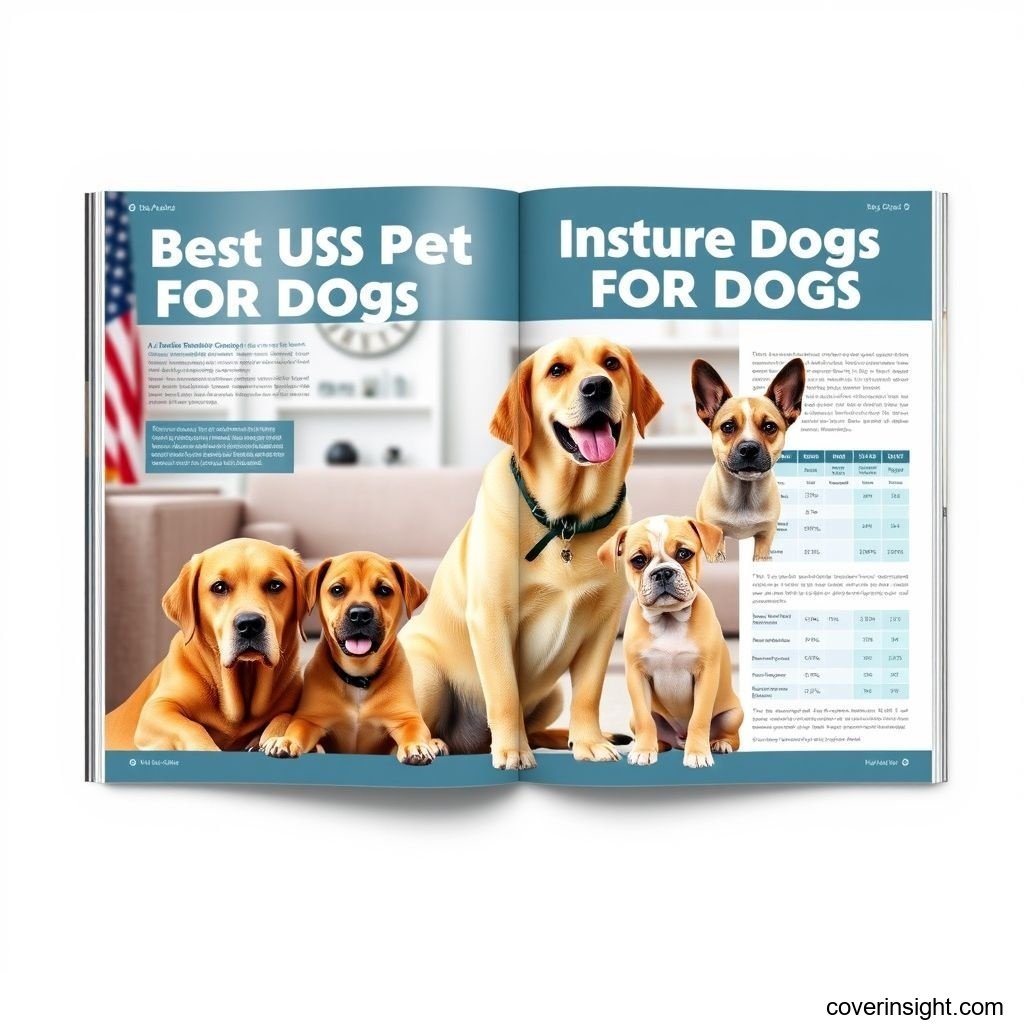Best US Pet Insurance for Dogs: Your 2025 Guide
Introduction
As we look towards 2025, the well-being of our canine companions remains a top priority for pet parents across the United States. With veterinary costs steadily climbing, securing the best pet insurance for dogs isn't just a luxury; it's a vital part of responsible pet ownership, offering crucial financial protection against unexpected illnesses or accidents. This guide will walk you through what to expect from pet insurance in the coming year, helping you make an informed decision for your beloved furry friend and ensuring you have peace of mind, come what may.
Coverage Details
Navigating the world of pet insurance can feel like deciphering a foreign language, but understanding what’s typically covered and what isn’t is half the battle.
What’s Included
Most comprehensive pet insurance plans are designed to cover a significant portion of unexpected veterinary bills. This generally includes accidents like broken bones, foreign object ingestion, or cuts, as well as illnesses ranging from ear infections and allergies to more serious conditions like cancer, diabetes, or kidney disease. Diagnostic tests (X-rays, ultrasounds, blood work), surgeries, hospitalization, prescription medications, and emergency care are commonly covered. Many policies also extend to specialist consultations, alternative therapies (like acupuncture or chiropractic care), and even behavioral therapy. Some insurers offer add-on wellness plans for routine care such as vaccinations, annual check-ups, and flea/tick prevention, though these are usually separate from accident and illness policies.
Common Exclusions
While pet insurance offers a wide net of protection, it's equally important to know what typically falls outside its scope. Pre-existing conditions are almost always excluded. This means any illness or injury your dog showed symptoms of, or was diagnosed with, before your policy started (or during the waiting period) won't be covered. This is why getting coverage early, ideally when your dog is a puppy, is a smart move – it’s a classic case of "a stitch in time saves nine." Cosmetic procedures, breeding costs, elective procedures like tail docking or ear cropping, and often, specific treatments for behavioral issues (unless a diagnosed medical condition) are generally not included. Some policies may also have specific exclusions for certain hereditary conditions, especially for breeds prone to them, unless you opt for a higher-tier plan. It's crucial to read the fine print!
Cost Analysis
The cost of pet insurance is a major consideration for many pet parents, and understanding what influences premiums can help you budget effectively.
Price Factors
Several elements play a significant role in determining how much you'll pay for the best pet insurance for dogs. Your dog's breed is a big one; breeds predisposed to certain genetic conditions (like hip dysplasia in German Shepherds or breathing issues in Bulldogs) often have higher premiums. Age also matters—younger, healthier dogs are cheaper to insure than older dogs who are more prone to health issues. Your location can influence costs, as veterinary care varies significantly across the US. For instance, according to the North American Pet Health Insurance Association (NAPHIA), the average annual premium for an accident and illness policy for a dog in the US was around $676 in 2023, but this can fluctuate wildly by state and even zip code due to differing vet costs. Lastly, your chosen coverage level, deductible, reimbursement rate, and annual limit all impact the premium. A lower deductible, higher reimbursement, and higher annual limit will naturally lead to a higher premium.
Saving Tips
Finding ways to save on pet insurance without compromising vital coverage is a goal for many. One of the best strategies is to enroll your dog when they are young and healthy. This not only locks in lower rates but also minimizes the chance of conditions being deemed "pre-existing." Choosing a higher deductible and a lower reimbursement rate (e.g., 70% instead of 90%) can significantly reduce your monthly premium, though it means you'll pay more out-of-pocket when a claim arises. Look for multi-pet discounts if you have more than one dog, as many providers offer savings. Some insurers also give discounts for things like spaying/neutering your pet, microchipping, or if you're a veteran. Always compare quotes from multiple providers to ensure you're getting the best bang for your buck; sites that allow you to compare various plans side-by-side can be a godsend. It's also wise to check with your employer, as some companies now offer pet insurance as an employee benefit.
FAQs
How much does best pet insurance for dogs cost?
On average, for an accident and illness policy for a dog in the US, you might expect to pay anywhere from $30 to $70 per month, or around $360 to $840 annually. However, this is just an average, and specific costs depend heavily on your dog's breed, age, location, and the specifics of your chosen plan.
What affects premiums?
Premiums are primarily affected by your dog's breed (due to breed-specific health risks), age (older dogs cost more to insure), geographic location (vet costs vary regionally), and the plan you select (deductible, reimbursement percentage, and annual limit). Your claims history can also play a role when renewing.
Is it mandatory?
No, pet insurance is not mandatory in the United States, unlike auto insurance in most states. It is a voluntary choice for pet owners to help manage potential veterinary expenses.
How to choose?
To choose the best pet insurance for your dog, compare multiple providers, paying close attention to their coverage limits, deductibles, reimbursement percentages, and exclusions (especially for pre-existing conditions). Read customer reviews, check their financial stability, and understand their claims process. For broader information on navigating insurance options, you can explore resources like the "National Association of Insurance Commissioners" website, and remember to check your "State Insurance Departments" for localized regulatory information and consumer guides. For those seeking general insights into various coverage options, exploring comprehensive "Insurance Resources Global" can also provide context. Ultimately, the best plan is one that offers the most robust coverage for your specific dog's needs at a price you can comfortably afford, providing that much-needed "US Insurance Home" for their health.
Consequences of no coverage?
Without pet insurance, you are solely responsible for all veterinary costs. This can lead to significant financial strain, especially in cases of major accidents or chronic illnesses. For example, treating a sudden illness like canine parvovirus or an accidental injury like a torn ACL can run into thousands of dollars. Many pet owners, caught off guard by these "sticker shock" bills, may face difficult decisions about their pet's care based on their budget, potentially impacting the quality or extent of treatment their dog receives. According to reports, a significant percentage of pet owners go into debt for their pets, or worse, have to consider economic euthanasia due to unaffordable medical bills.
Author Insight & Experience: Based on my experience, navigating the pet insurance landscape can feel overwhelming, but it’s truly a game-changer when an unexpected emergency hits. As someone living in the US who's dealt with my own share of vet bills, I've seen firsthand how a good policy can turn a potentially devastating financial blow into a manageable expense. It’s not just about the money; it's about the emotional relief of knowing you can focus on your dog's recovery without the added stress of "breaking the bank." Don't wait until your dog gets sick or injured; that's when you realize the true value of foresight.







Comments